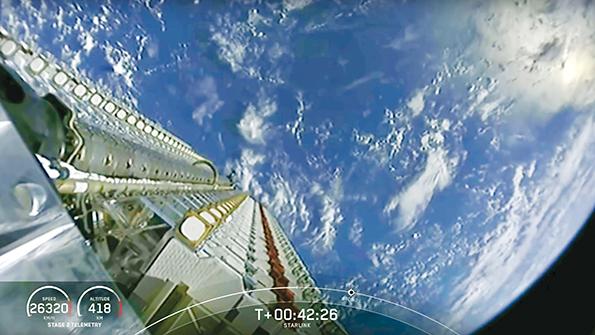Opinion: It’s Time For Comprehensive Space Traffic Management

In today’s complex space operations environment, the benefits we derive from space—as well as the welfare of our astronauts, spacecraft, commercial space industry and general public—are vulnerable. Spacecraft operators are not receiving the decision-quality space situational awareness (SSA) and space traffic management (STM) required to conduct safe operations and ensure space sustainability.
U.S. flight safety services freely provided by the Defense Department to commercial spacecraft operators are insufficient, through no fault of the men and women in uniform but rather as a result of the aging legacy tools they are using. These tools produce too many false alarms and miss too many serious threats. False alarms require spacecraft operators to squander precious resources and fuel. The majority of potentially lethal space objects—96%—remain untracked. These shortcomings, compounded by outdated space-tracking algorithms, insufficient quality control and a lack of transparency, degrade flight safety. We have allowed legacy tools and algorithms to dictate the quality of SSA that operators receive. It is high time that we agree upon a set of key requirements an STM system must meet and then “make it so.”
In addition, the U.S. is going to great lengths to manage space as a warfighting domain. U.S. Space Command rightly desires to migrate existing SSA sharing and spaceflight safety services out of the Pentagon in order to focus resources on national security.
Complicating matters further is the predicted increase in space traffic. The U.S. commercial space industry has filed applications for 51,000 new large-constellation spacecraft in the next 10 years. While only a portion of these applications will give rise to operational spacecraft, we anticipate the active spacecraft population to be 4-10 times larger within the next decade. This year alone, it is on track to double. Millions of close approaches will occur, and without more accurate SSA, operators will be extremely challenged to take appropriate action.
Decision-quality SSA lowers collision risk. Observing space objects, fusing data, solving orbits, and detecting and characterizing potential collisions enables spacecraft operators to mitigate the threat. The 2009 Iridium-Cosmos collision is noteworthy because it shows what happens when operators fail to receive decision-quality SSA: A planned maneuver was missed, and collision risk was underestimated by 40 orders of magnitude. And in January, SSA detected the near collision of two dead spacecraft, which could have produced 12,000 new pieces of space debris. Other potential collisions could yield more than 100,000 fragments. A large-scale collision would reverberate through our burgeoning $1-3 trillion space economy, introducing uncertainty and impeding growth.
Left unchecked, these threats can lead to a cycle of cascading collisions known as the Kessler Syndrome, potentially rendering the use of space unsustainable. If we surpass this ecological threshold, there is no return.
We’ve been lucky so far, but the clock is ticking.
Improvements are critically needed and achievable. Commercially available SSA and STM technologies—operating today using advanced astrodynamics algorithms—can provide actionable notifications of impending threats. The U.S. must determine how to incorporate these commercial capabilities into a cohesive set of tools to produce decision-quality SSA.
The U.S. should take the following steps to improve overall SSA and STM:
- Transition public-facing SSA and STM services to a nonmilitary organization.
- Authorize and resource U.S. STM operational initiatives immediately.
- Find ways for the government to nurture and incorporate commercially provided SSA and STM services.
- Provide resources to conduct active debris-removal tests.
- Take a leadership role in the development of space traffic management, large-constellation standards and best practices.
- Establish, model and implement rules of the road.
- On this 25th anniversary of the 25-year orbit lifetime rule, “deorbit” this rule in favor of a more stringent post-mission disposal guideline to better address current and planned large-constellation traffic—and then abide by that rule.
The commercial space community has proactively sought voluntary ways to address flight safety. The Space Data Association provides spaceflight safety services for 30 operators controlling 788 spacecraft that span all orbit regimes. The global Space Safety Coalition develops and maintains an aspirational set of “living” space-safety best practices. Such efforts to promote and enable long-term sustainability are critical to the equation.
Now, Congress must fund initiatives and adopt policies that leverage existing commercial resources to promote spaceflight safety. The long-term sustainability of the space environment, the socioeconomic benefits derived from operating in space and the success of the U.S. commercial space industry are all at risk.
The time for action is now.
Daniel Oltrogge is the director of Analytical Graphics’ Center for Space Standards and Innovation, founder and administrator for the Space Safety Coalition and program manager of the Space Data Center.
The views expressed are not necessarily those of Aviation Week.


Comments
Surely that cannot be correct.